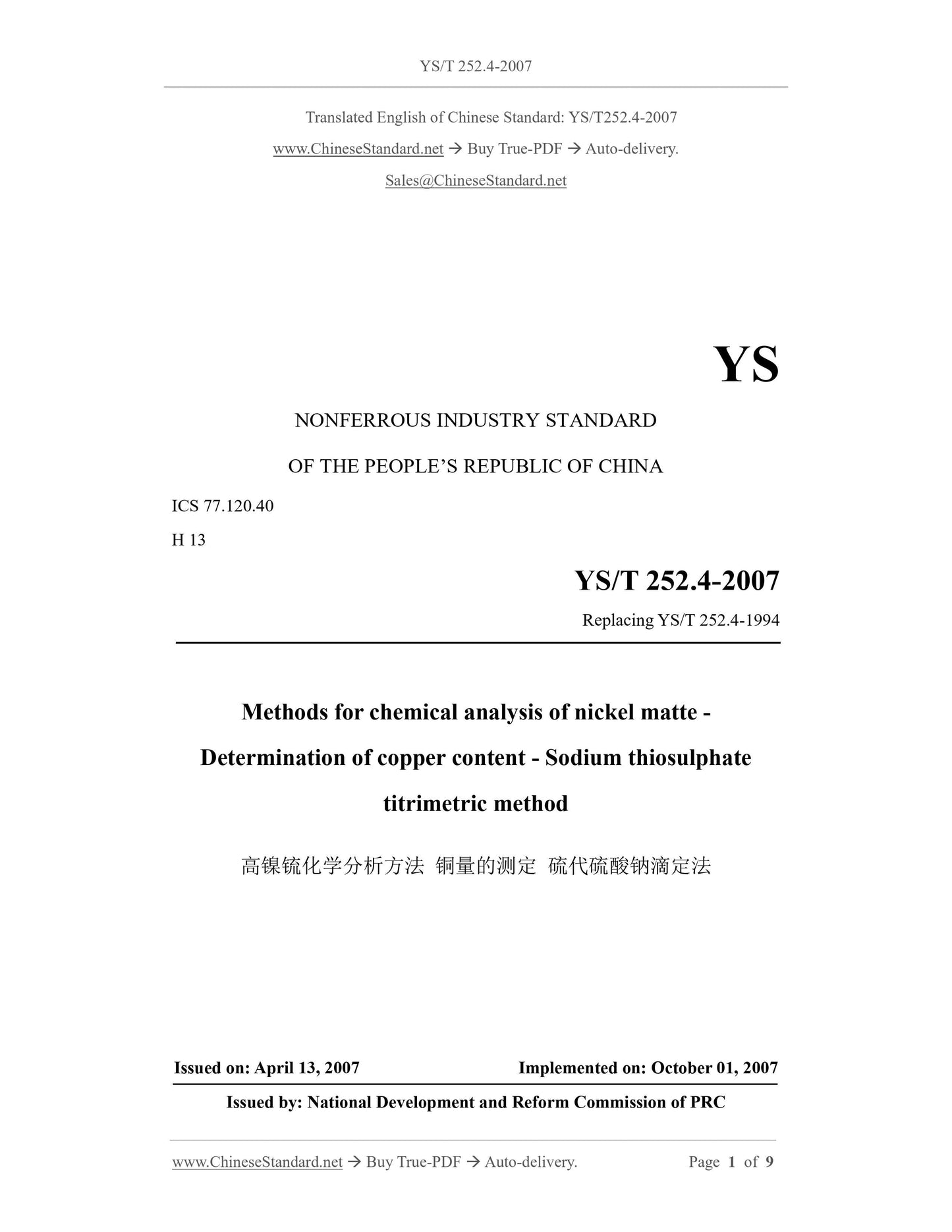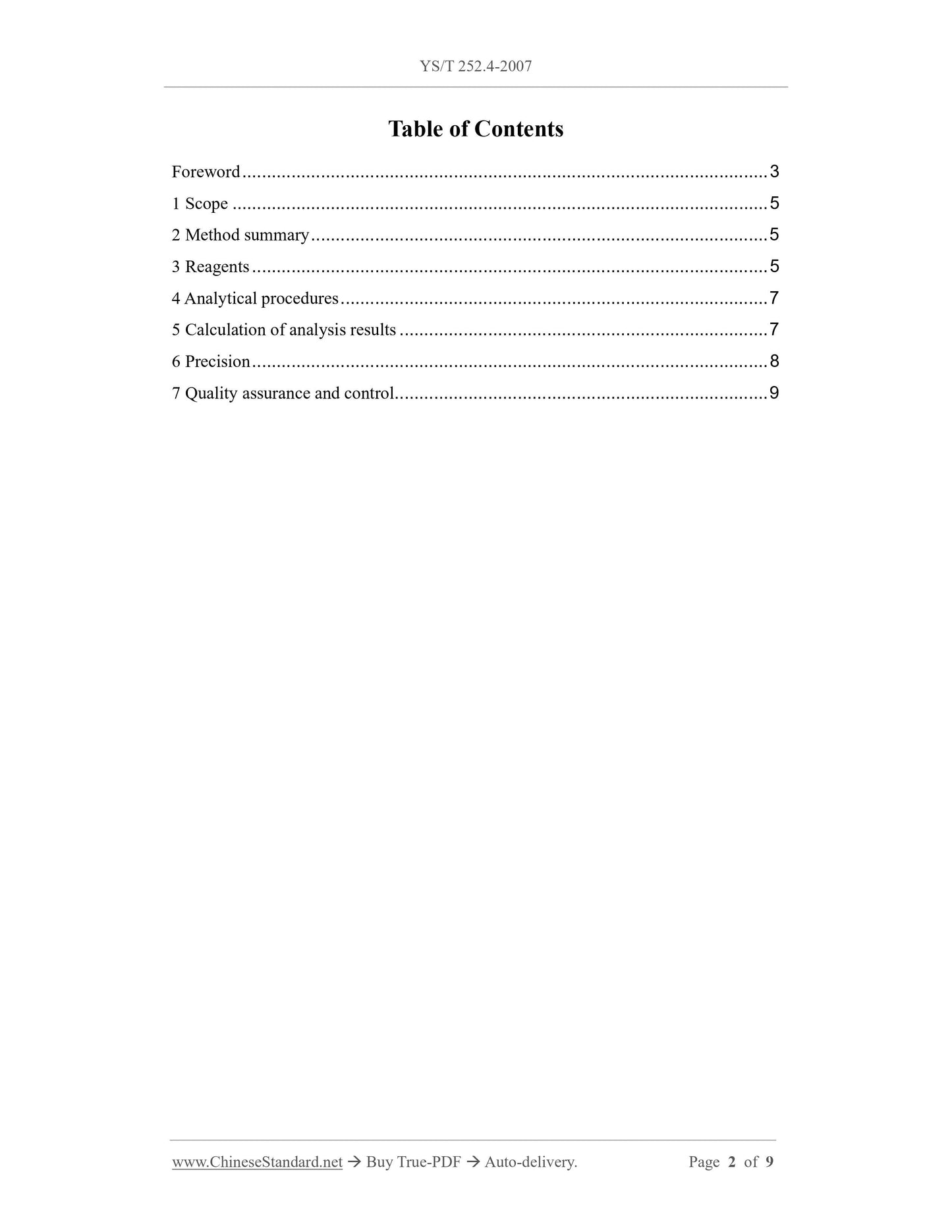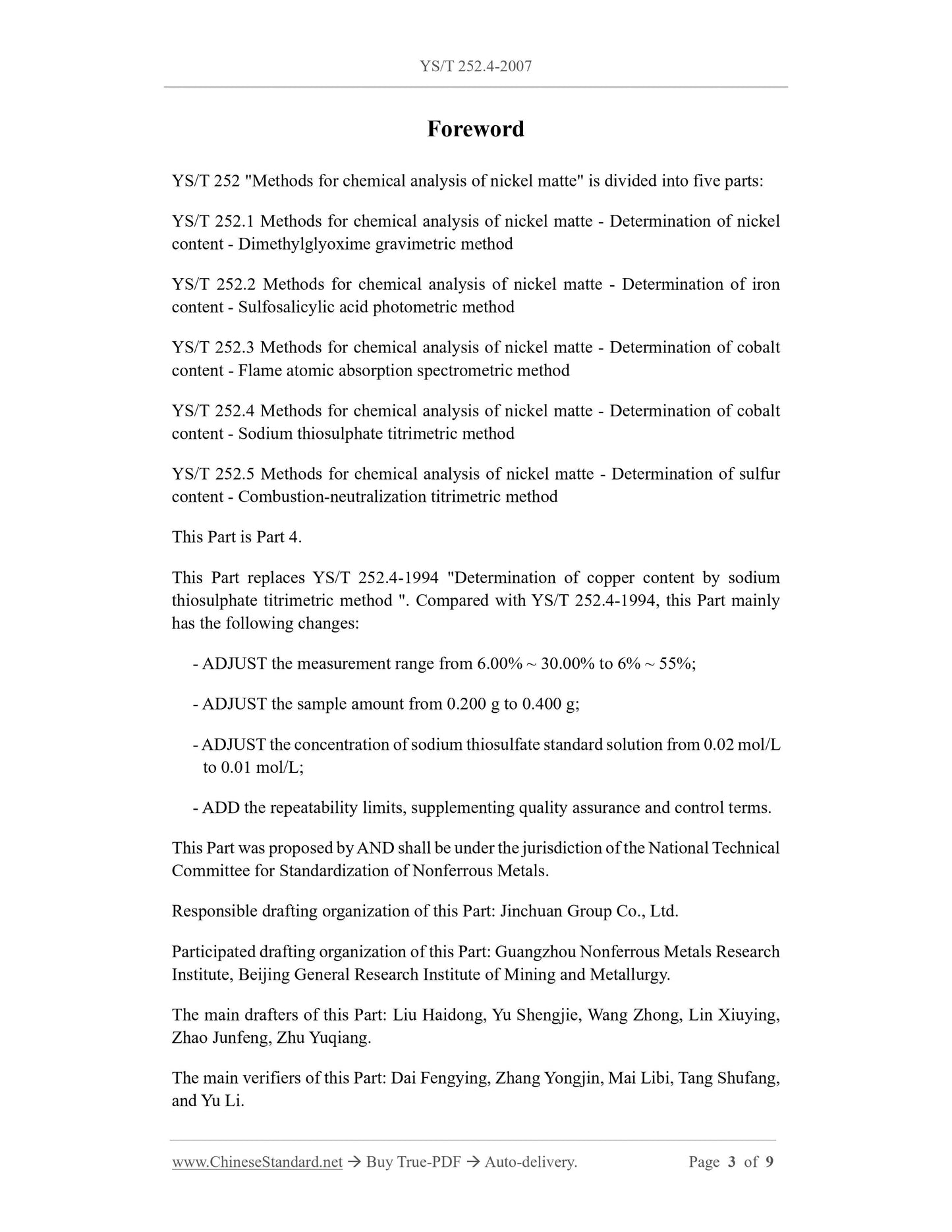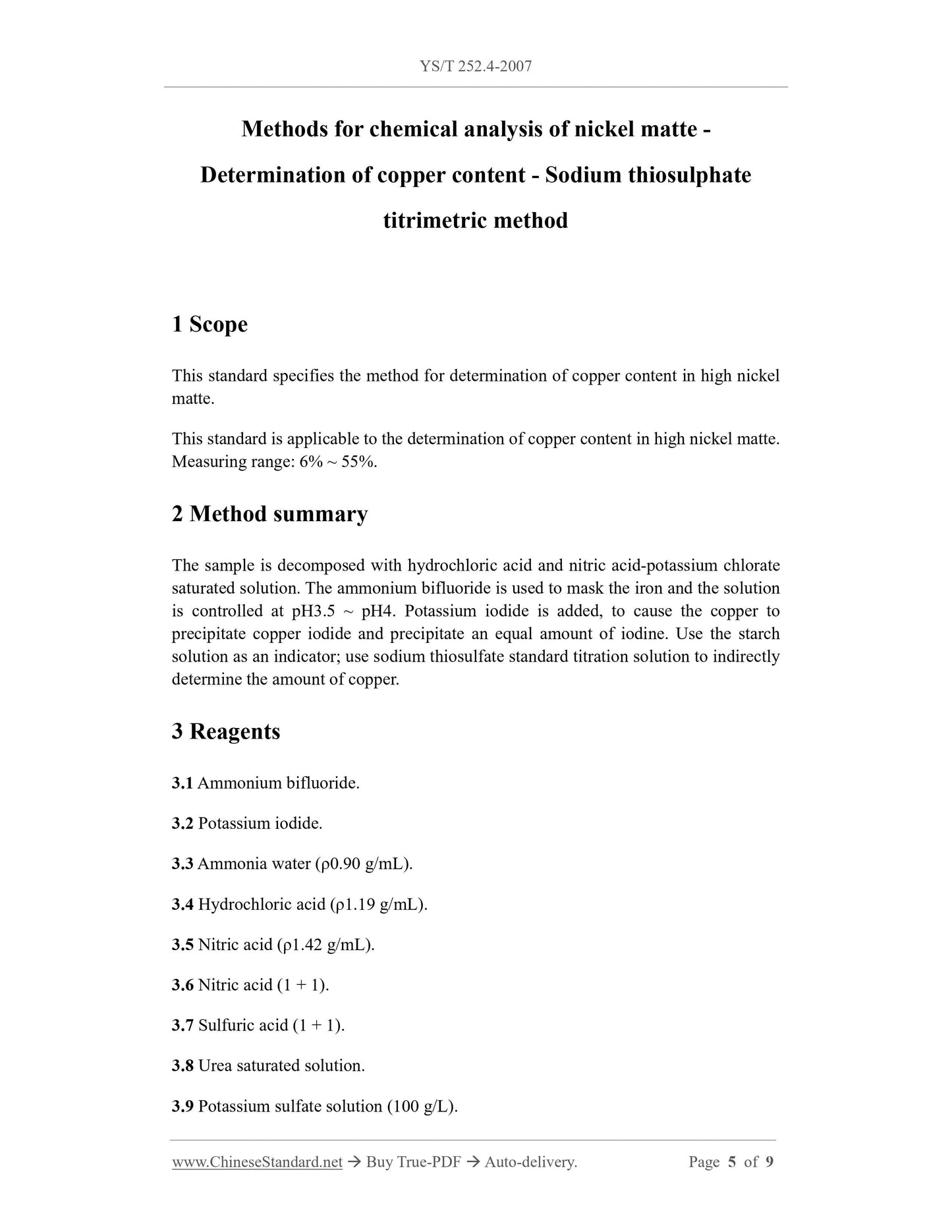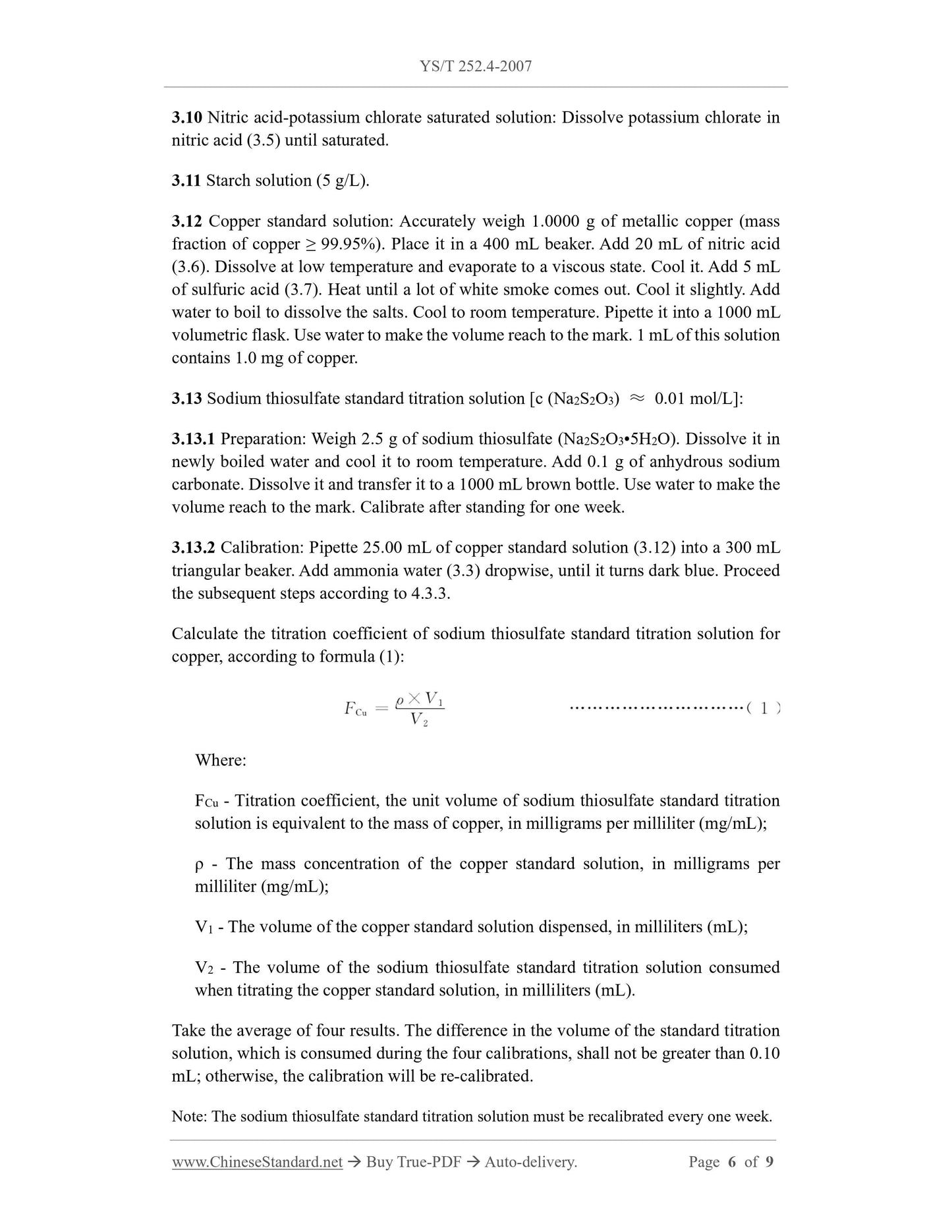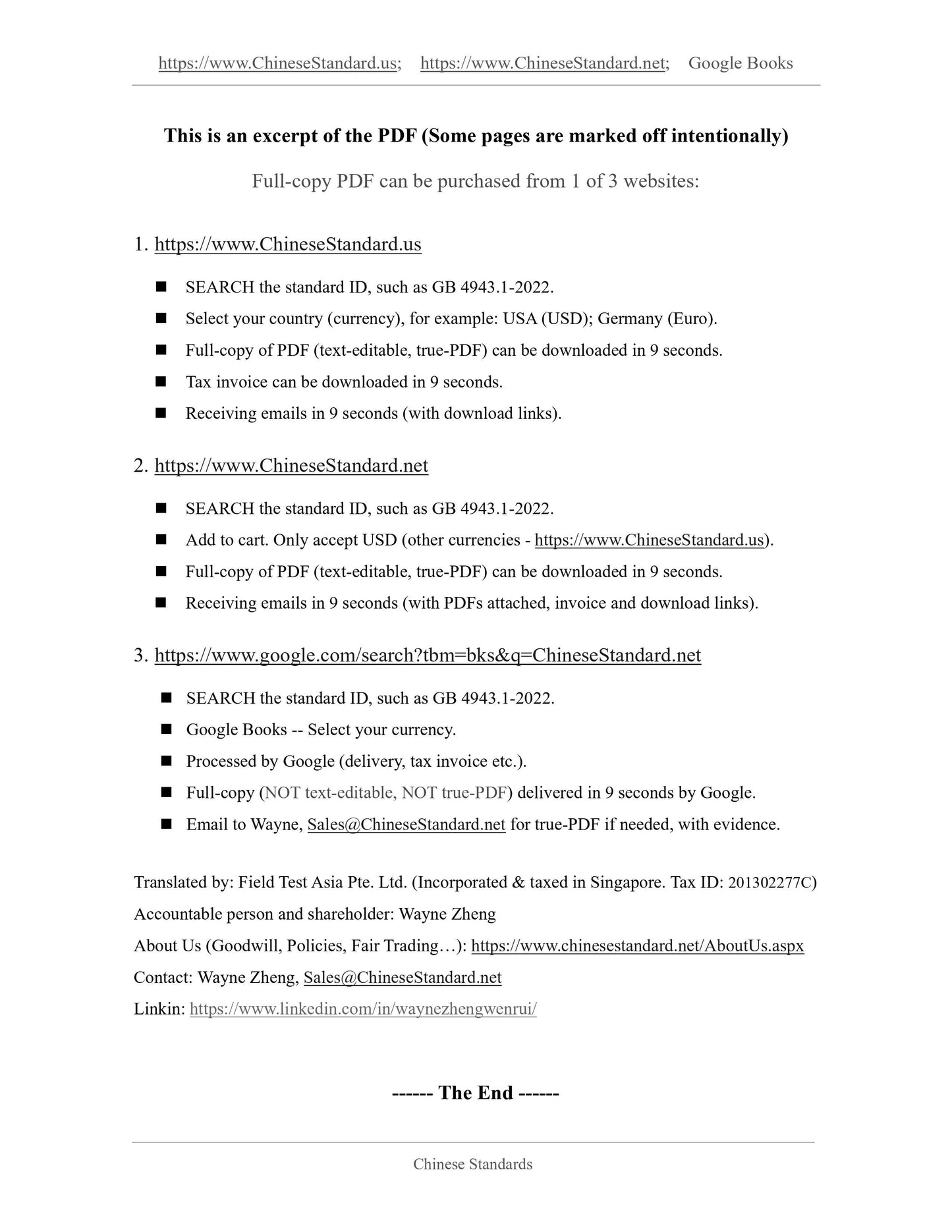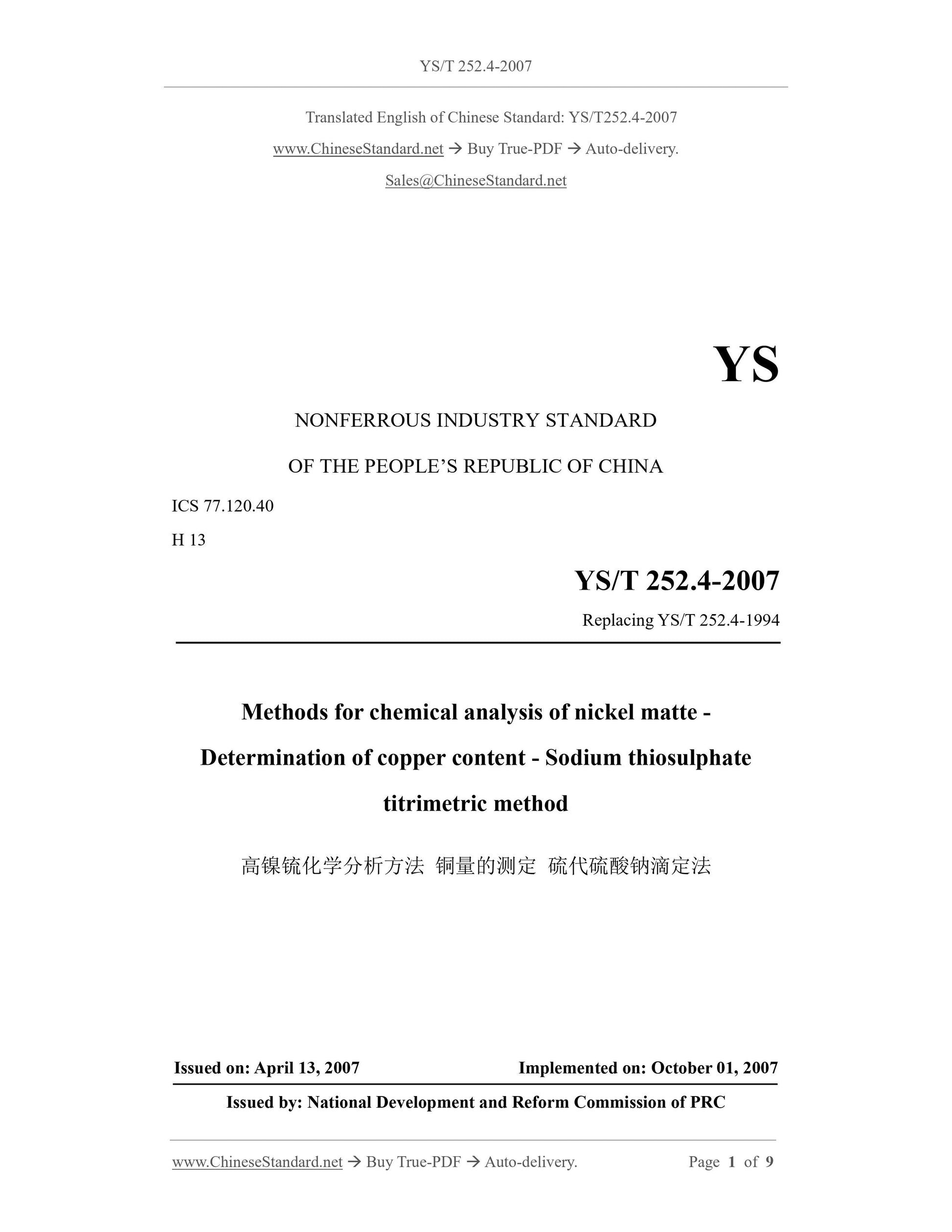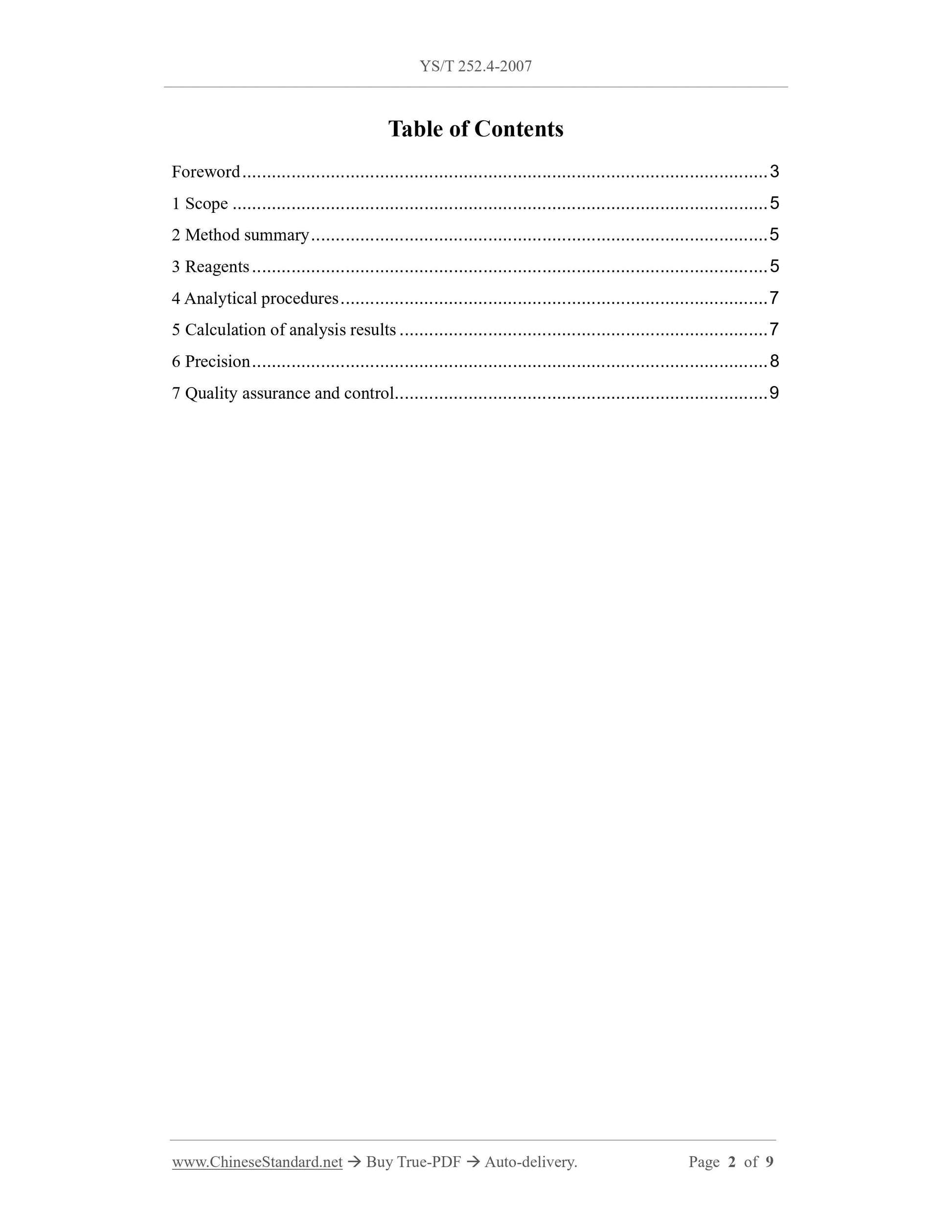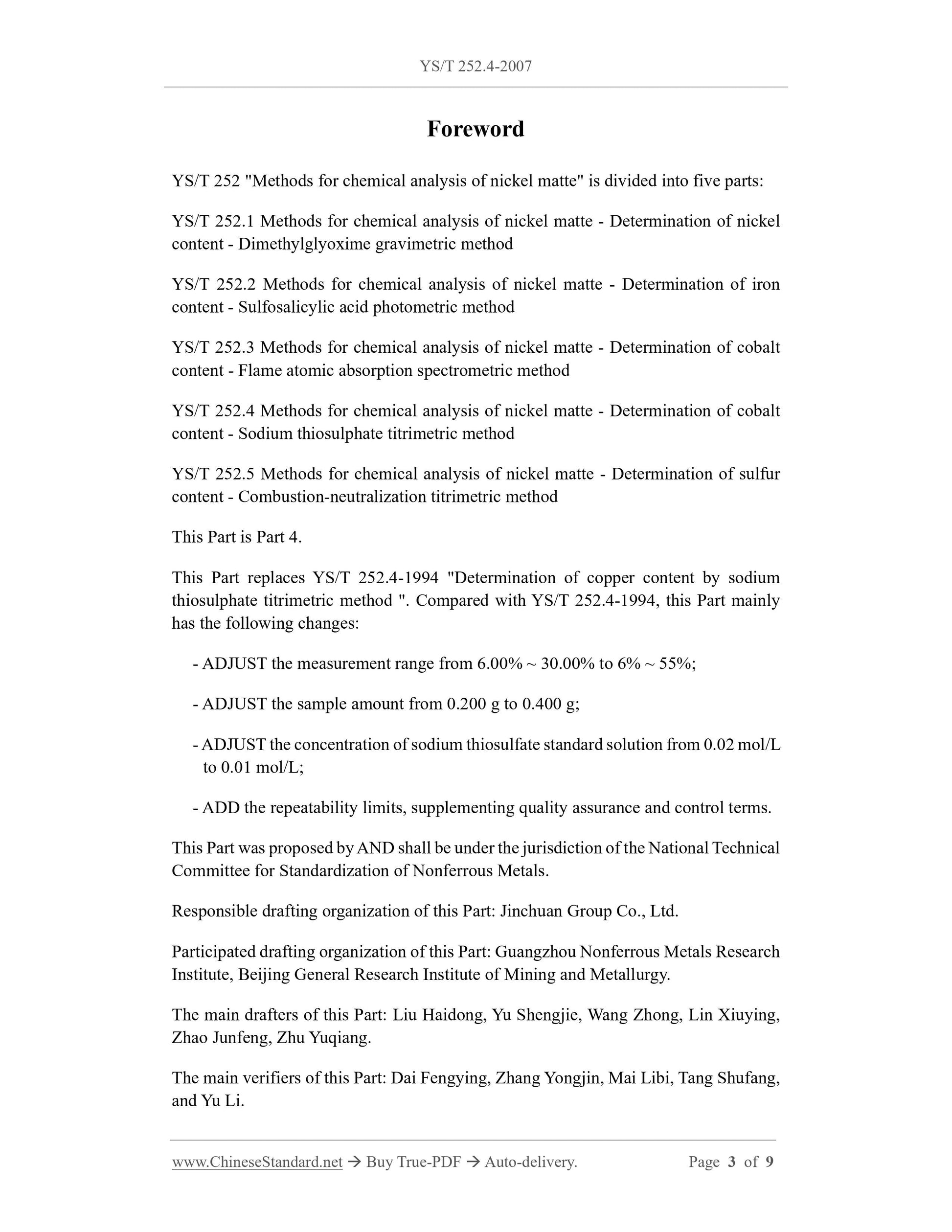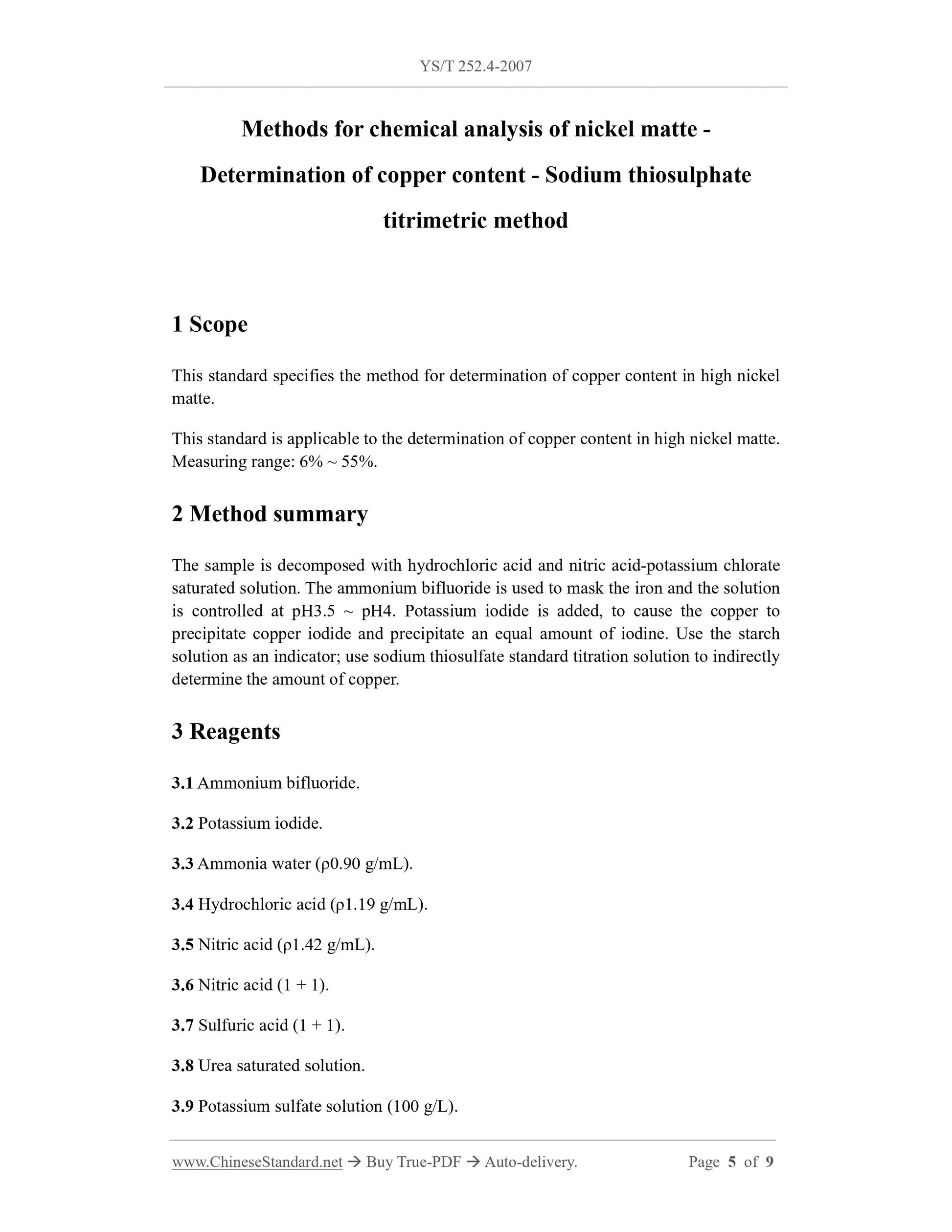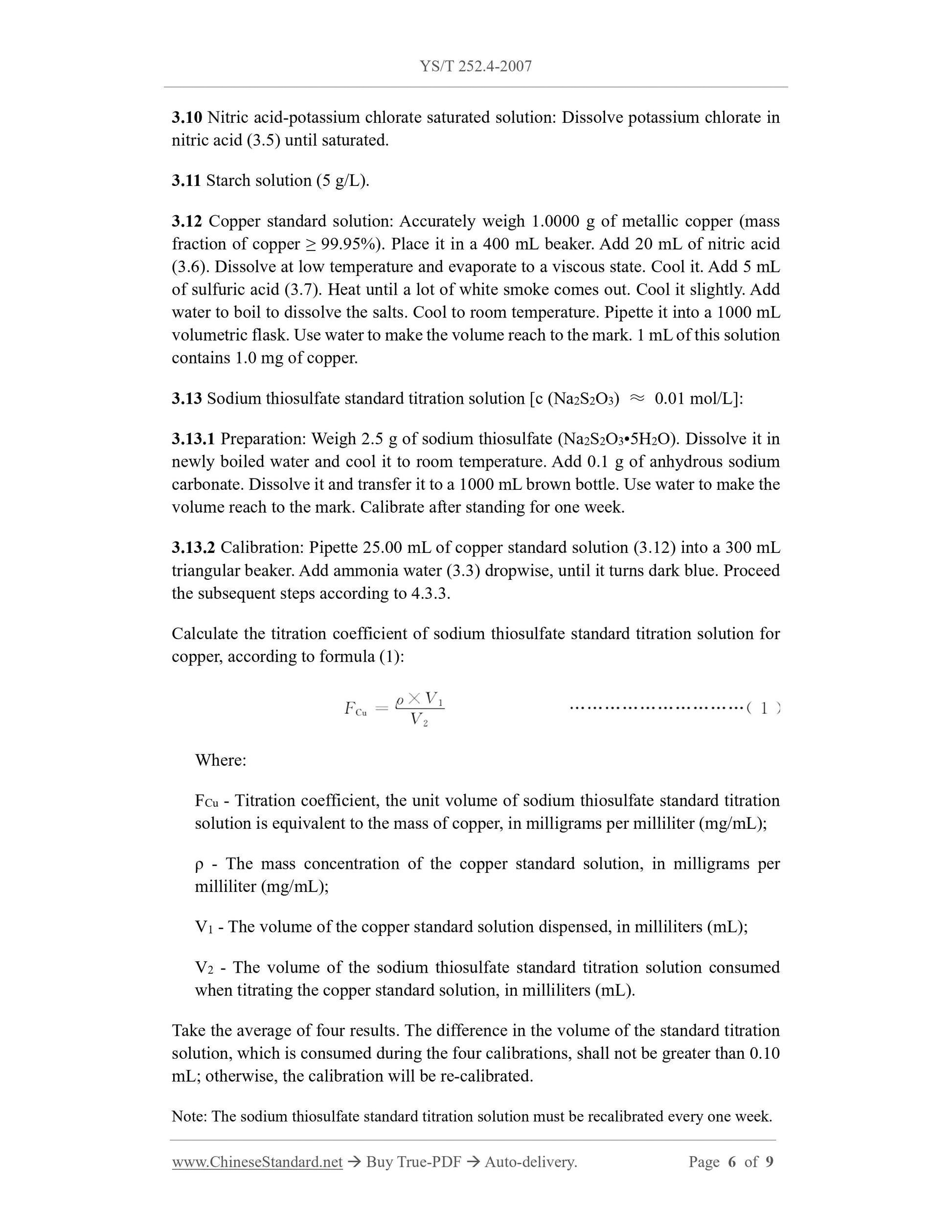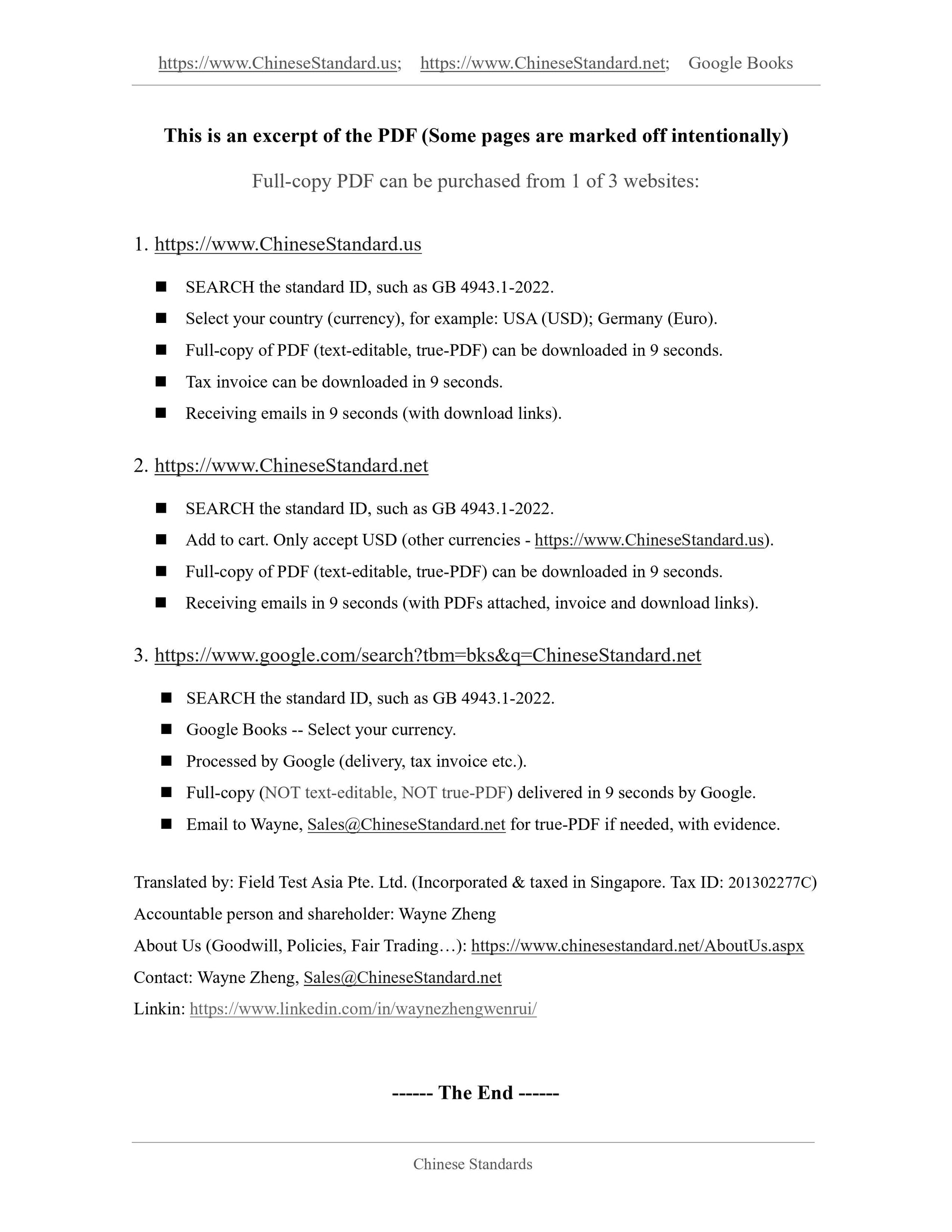1
/
of
6
www.ChineseStandard.us -- Field Test Asia Pte. Ltd.
YS/T 252.4-2007 English PDF (YS/T252.4-2007)
YS/T 252.4-2007 English PDF (YS/T252.4-2007)
Regular price
$110.00
Regular price
Sale price
$110.00
Unit price
/
per
Shipping calculated at checkout.
Couldn't load pickup availability
YS/T 252.4-2007: Methods for chemical analysis of nickel matte. Determination of copper content. Sodium thiosulphate titrimetric method
Delivery: 9 seconds. Download (and Email) true-PDF + Invoice.Get Quotation: Click YS/T 252.4-2007 (Self-service in 1-minute)
Newer / historical versions: YS/T 252.4-2007
Preview True-PDF
Scope
This standard specifies the method for determination of copper content in high nickelmatte.
This standard is applicable to the determination of copper content in high nickel matte.
Measuring range: 6% ~ 55%.
Basic Data
| Standard ID | YS/T 252.4-2007 (YS/T252.4-2007) |
| Description (Translated English) | Methods for chemical analysis of nickel matte. Determination of copper content. Sodium thiosulphate titrimetric method |
| Sector / Industry | Nonferrous Metallurgy Industry Standard (Recommended) |
| Classification of Chinese Standard | H13 |
| Classification of International Standard | 77.120.40 |
| Word Count Estimation | 6,678 |
| Date of Issue | 2007-04-13 |
| Date of Implementation | 2007-10-01 |
| Older Standard (superseded by this standard) | YS/T 252.4-1994 |
| Regulation (derived from) | NDRC Notice No. 22 of 2007 |
| Issuing agency(ies) | National Development and Reform Commission |
| Summary | This standard specifies the high nickel matte Determination of copper content. This standard specifies the high nickel matte copper content. Measuring range: 6% to 55%. |
Share
